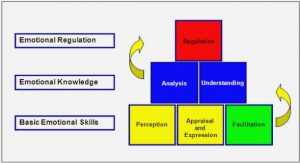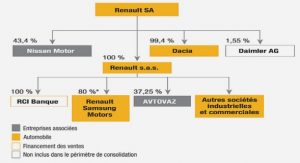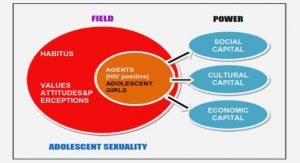Get Complete Project Material File(s) Now! »
Mass Movement Classification
MM represents the lateral and downslope movement of earth materials such as rock, soil, and/or artificial fill (Varnes, 1984). The terms “mass movement”, “slope movement”, and “slope failure” when used in a generic sense, are generally equivalent in meaning. Several classifications of mass movements exist universally (Coates, 1977; Varnes, 1984; Kehew, 1995; Cruden and Varnes, 1996). These classifications are valuable in indicating the range of mechanisms and forms of motion. But it must be appreciated that mass movements in reality involve a combination of processes. Four principal types of movement are identified and described – creep, slide, fall and flow, that are widely recognized in the Mediterranean environments (Nemeok et al., 1972). Each of these can be subdivided into more specific forms of movements. The classification is based on several criteria: 1) type of failure, 2) type of material being displaced, 3) moisture content, 4) type of strain and nature of movement and 5) rate of movement (Table 1.1). The below table shows a schematic MM classification adopting the classification of Varnes (1984), Cruden and Varnes (1996) and Hungr et al. (2001).
Due to the complexity of the Mediterranean terrains, the different levels of awareness of the impact of MM on the territory and somehow limited resources available for inventory and maintenance, detailed MM records occurring in the Mediterranean region still required (Guzzetti, 2000; vanWesten, 2006; Triglia et al., 2010; Guzzetti et al., 2012). Nevertheless, in some specific locations, the information is available on historical and recent MM with consequences collected from available bibliography and archives. As an example, a large database has been constructed in Italy showing 31,000 MM events at 21,400 sites (equivalent to a density of 1 MM per 15 km2) (Guzzetti, 2000). This information was obtained from about 100,000 newspaper articles and 2,000 scientific and technical reports. In addition, the exact distribution of each type of MM (slide, fall and flow) is often restricted to particular studied zones in a given country (Table 1.2). The MM density varies between 0.29 and 0.54 per km2 according to the studied region. It is highest in the case of slides reaching 0.29 per km2 in Southeast Spain.
Falls
Falls occur when masses of rock or other material detach from a steep slope or cliff and descend by free fall, rolling or bouncing. In the Mediterranean environments, falls are less frequent than slides and are restricted mostly to cliff-rock outcrops with vertical to very steeply dipping and dense joints (Figure 1.1a to 1.1c). Velocities are very high and they generally occur quite suddenly. Large rock falls originating from a considerable height above the ground spread their debris over an extensive area unless the dispersal of material is confined by topography (Carere et al., 2001; Fard, 2001). The highest rock fall hazard exists when joints and bedding planes are inclined at a steep angle, as in the highly folded stratigraphy common in major mountain chains like the Alps. Since a rock rarely loses equilibrium without a inducing mechanism, earthquakes and freeze-thaw are the major factors interfering with rock stability (Watts, 2001). Debris falls are similar except they include a mixture of soil, vegetation and rocks.
Slides
Slides are mainly defined as slope movements of coherent masses along one or more well-defined shear surfaces (Nemeok et al., 1972).The great majority of slides in the Mediterranean environments are small and shallow with lengths of a few tens of meters and depths of 2-3 m. Slides in bedrock are less common, but may attain enormous dimensions and involve the movement of millions of cubic meters of material. Some slides took place during ancient times and are still continuing their activity until today. An example is the Fadalto MM located in Italy, which goes back to the late glacial time, and includes a large scarp with debris accumulation that occupies a belt of about 280 m (Eisbacher and Clague, 1984; Pelligrini and Surian, 1996).
Slides can be subdivided into transitional slides, which have predominantly planar shear surfaces, and rotational slides in which the shear plane is concave-up (Table 1.1, Figure 1.1d to 1.1i). Translational failure is common in cliff forming units, particularly where there is interbedded competent and incompetent rock. It is increased by the presence of marls, and invariably marly or argillaceous limestone. Rotational failure commonly occurs in relatively unconsolidated poorly cemented sandstones, weathered basalts and the surficial cover. The rotational movement can result in the upper part of the slumped mass being back-tilted towards the failure surface. Moreover, the movement may start as translational along a joint parallel to the cliff face and either continues deeper, thus becoming prone to rotational mode, or may induce rock/debris fall. This type of slope failure creates a great deal of property damage. A good example is the MM disaster which affected the city of Ancona, central Italy, in 1982 (Alexander, 1991).
Flows
Debris flows (viscous flows) tend to be less deep-seated and rather less common slope failures than MM (Figure 1.1j to 1.1l). The high water content means that the material moves faster and farther from the original source. Mud Flows on the other hand, are highly fluid, high velocity mixture of sediment and water that has a consistency ranging between soup-like and wet concrete. They could travel at a speed rate that reach 1 km/hr making them extremely dangerous. These usually result from heavy rains in areas where there is an abundance of unconsolidated sediment (Watts, 2001). A good example is the huge earth flow in Aquoura area (Lebanon), where the constructed artificial lakes act as an inducing parameter in activating this flow (Figure1.1j).
Moreover, biotic destruction by MMs is also common; widespread stripping of forest cover by mass movements (Schuster and Highland, 2007). In order to be able to create safety measures and lay hazard management foundations, we need to understand the processes that initiate land sliding and then prepare for consequent susceptibility mapping (Yalcin, 2008).
Factors Influencing the Occurrence of Mass Movement
MM do not occur randomly (Turcotte et al., 2002). Slope failures are the outcome of the interaction of physical procedures and mechanical laws controlling the stability or failure of a slope. The study of MM involves an understanding of these factors that affect their occurrence. These factors can be categorized into; (a) preconditioning (topography, geology, hydrogeology, soil, and land use) and (b) inducing factors (neotectonics, rainfall, flooding, forest fire, manmade excavation and climatic variation) (Cendrero and Dramis, 1996; Dahal et al., 2008).
Preconditioning Factors
Preconditioning factors are the inherent land surface characteristics and morphology and consequently determine the innate liability of a slope to failure or mass wasting. The intrinsic variables determine the pre-dispositioning of a site to MM and include bedrock geology, hydrology, soil, topography (slope aspect, slope gradient) and land use pattern. (Cendredo and Dremis, 1996 ; Sanchez et al., 1999; Dahal et al., 2009).
Topography
Topography and relief are synonymous terms used to denote the configuration of the land surface (Carte and Ciolkosz,1991). Being the element that portrays the elevation and shape of the land, topography is a decisive surface characteristic in slope failure modeling (Crozier, 1986; Datta et al., 2010). Slope characteristics used to describe relief include the aspect, gradient, length, and curvature of the slope. Gentle slopes are expected to have a low frequency of MMs because of lower shear stresses exerted on surficial materials associated with low gradients. At local scales, slope gradient affects the concentration of moisture and the level of pore pressure, and is often useful to resolve detailed patterns of instability, while at larger scales; it controls the hydraulic continuity (Abdallah, 2007). Slope orientation can influence mass wasting initiation, the distribution and density of MM by controlling the concentration of soil moisture (Wieczorek et al., 1997). Moisture retention and vegetation is reflected by slope aspect, which in turn may affect soil strength and vulnerability to slope failure (Florinsky, 2012). Moreover, if rainfall has a manifested directional constituent by influence of a existing wind, the amount of rainfall falling on a slope may vary depending on its aspect (Dai et al., 2002). Slope curvature affects flow divergence and convergence (Lewis et al., 1994) hence affects the amount of sediment loss. For instance, concave greatly reduced the total sediment loss in comparison with a uniform or convex slope.
Lithology
Lithology is one of the most important parameters in MM studies because different lithological units have different liability degrees (Yesilnacar and Topal, 2005, Yalcin and Bulut, 2007; Garcia-Rodriguez et al., 2008; Nefeslioglu et al., 2008). The physical properties of slope-forming materials such as fractures, fissures and rock strength that are involved in the mass wasting are related to the geology (Dai and Lee, 2002). The rock type, structure and texture influence MM processes. MMs are quite important where clayey rocks (clay-stones, marls, shales, muds, flysch) or morainic materials outcrop. The presence of these rock types in the Mediterranean region favors various types of mass movements, including landsliding. The clayey, shaly, or marly horizons are potential shear planes as they retain water. Once saturated, they behave like a liquid resulting in occurrence of rapidly moving mudflows. The soluble carbonate rocks also pose problems; they may include expanding clays which interact with and weaken the carbonate cement, hence weakening the rock itself (Chebbani et al., 1999, Abdallah, 2007).On the other hand, highly fractured rocks may possess both significant permeability and fracture porosity. Due to the fact that joints comprise of the weakest zones of rock masses, the anisotropy created by the joints is of significance. More specifically, in jointed rock slopes, the joints produce the natural mechanisms of planar, wedge and toppling failure (Pal et al., 2011).
Soil
The structural stability of soils is a physical characteristic that influences their behavior during processes of degradation. Soil degradation mainly involves destruction of soil structure (Baumgartl and Horn, 1991). Soil properties which influence rainfall acceptance include particle size distribution, structural stability, organic matter content, soil chemistry and clay mineralogy and water transmission characteristics (Lal, 2001).Generally, soils with faster infiltration rates, higher levels of organic matter and improved soil structure have a greater resistance to erosion.
Moreover, when soil management gives way to the accumulation of plant residues, they tend to increase the aggregate stability of the soil unlike other tillage and cropping practices which lower soil organic matter levels, cause poor soil structure, and result to an increase in soil erodibility (Rachmanet al., 2003). Crust formation in the unstable soils of arid regions usually results from the combined effect of raindrop impact energy and the dispersion of clay particles. These factors reduce the hydraulic conductivity of the soil surface and hence infiltration rate into the soil (Carmi and Berliner, 2008). A subsequent augmentation in the amount of runoff water can contribute to greater rill erosion troubles. The soils found in the Mediterranean climate are highly variable, but do have in common properties that make them susceptible to water erosion. These 27 characteristics lead to surface sealing during rainfall. However, in some cases, this coating might shape to decrease the amount of soil loss from sheet or rain splash erosion in the absence of any protective vegetation.
Land use
Among the factors inducing the potential intensity of mass wasting, land use is considered one of a high important factors (Ruff and Czurda, 2008; Chen and Huang, 2013). Deforestation, overgrazing and intensive agriculture as a result of anthropogenic pressure are often one of the main preconditioning factors of MM (Karsli et al., 2009). Land use change cause large alterations in the hydrological and morphological function of slopes, affecting infiltration characteristics, and runoff production, and even the shear strength of the soil. Vegetation (especially woody type) limits the movement of the debris present along slopes in two folds, i.e. hydrological (capacity of infiltration into the soils, soil moisture, groundwater level, etc.), and mechanical (root length). Where the vegetation cover is sparse, the slow movement inside the debris will not be ceased. Hence, dry environments under natural conditions are biologically marginal, and they can be expected to be highly susceptible to mass movement (Thornes, 1995; Garcia-Ruiz et al., 2010). A common method for decreasing water runoff and soil erosion is via stable and suitable vegetative cover (Dunjo et al., 2003; Chaplot and Bissonnais, 2003).
Inducing Factors
MMs can be prompted by a multiplicity of external Inducing or dynamic factors, such as intense rainfall, earthquake shaking, forest fires, flooding in addition to the expanded development in unstable hillslope areas under the pressures of escalating population and urbanization (Dai and Lee, 2002).
Neotectonics
MMs occur frequently in areas where minor and major morphotectonic events (uplift, subsidence, faulting, jointing and earthquakes) occur (recent or past), the latter being important throughout the Mediterranean basin (Pelligrini and Surian, 1996; Del Gaudio and Wasowski, 2004; Bottari and Sepe, 2013). Earthquakes have a decisive and clear power on slope stability; natural and man-made slopes which become equally unstable during an earthquake (Keefer, 1994). The instability of slopes due to an earthquake causes more destruction than the actual earthquake itself (Sato et al., 2007; Kamp et al., 2008; Owen et al., 2008). Ground shaking and acceleration due to seismic waves energizes the weakened forces on the soil and rock masses even though ground displacements due to seismic waves may be sufficiently large to rupture bonds between soil particles. An earthquake does not only add adverse forces to a slope but may also enduringly diminish the shear strength in a slope (Hack et al., 2007). Earth section (mostly composed of soil and alluvium) became vulnerable to future failure through loss of cohesion and numerous cracks that were induced by the strong ground motion. According to Dunning et al. (2007) “the seismic shaking leaves an imprint (fractures, tension cracks and brittle deformation of rocks) on the slope stability of the area that may have long lasting effects on the future rates and spatial distribution of MMs”. The widespread fracturing implicates that, in the future, slope failures can be effortlessly initiated by severe rainfall or low intensity earthquakes (Saba et al., 2010). Examples showing the strong relations between seismic events and mass movements were described in the historic literature. The major earthquake that hit Lebanon in 551 A.D. depicts the huge slides occurring at Chekka, and in fact was responsible for constructing its current coastal configuration (Khawlie, 1992). In 1927, a destructive earthquake affected the west bank of Jordan River inducing major MMs stopping the river flow for 21 days (Ambraseys and Barazangi, 1989). The 2002 Avaj, Iran earthquake of magnitude 6.5 triggered many MMs over an area of about 3600 km2 (Mahdavifar et al., 2006).
Intensity Rainfall
The Mediterranean environment is characterized by seasonally contrasted climate, with low annual rainfall and irregular but frequent rain events with extreme intensities, scarce vegetation cover and poor soil characteristics (López-Vicente et al., 2008). The vulnerability of the Mediterranean region to MM hazard is mostly influenced by the frequent coincidence of dry summer periods with violent rainstorms (Petan et al., 2010). Precipitation acquires an erosive characteristic represented by an aggressive mechanism that targets soil deterioration and reduction of shear strength between its particles. (Martınez-Casasnovas et al., 2002) It is generally recognized that rainfall-induced MM are caused by increased pore pressures and seepage forces during periods of intense rainfall (Anderson and Sitar, 1995) which decreases the effective stress in the soil and thus reduces the soil shear strength, eventually resulting in slope failure (Brenner et al. 1985). The impact of raindrops on the soil surface can break down soil aggregates and disperse the aggregate material. Lighter aggregate materials such as very fine sand, silt, clay and organic matter can be easily removed by the raindrop splash and runoff water; greater raindrop energy or runoff amounts might be required to move the larger sand and gravel particles. The shallow failures of slopes in these soils are usually caused by infiltration due to prolonged rainfall (Kim et al., 2004). Furthermore, raindrop energy causes a splash coating that alters the infiltration process and increases runoff, inhibiting a proportion of rain from percolating into the soil. But not every rainfall incident leads to runoff and erosion. The notion of a threshold value and duration below which erosion does not occur, a threshold of minimum intensity, is acquired through the combination of an erosivity index, a threshold of duration of high intensity and a duration of the rainfall which produces soil saturation and the degeneration of the soil constitution. Soil movement by rainfall (due to raindrop splash) is usually at peak and most perceptible during short-duration, high-intensity thunderstorms (Assouline and Ben-Hur, 2006). Rainfall intensity records are difficult to ascertain and even if we had a recorder, it would have short term data that could be insufficient to establish a trend or a threshold for a large study area, but it has been found by Roose (1979) that starting from long series of daily rainfall observation, it is possible to find satisfactory monthly and yearly averages of rainfall erosivity index.
Forest fires
Forest fires are a usual element in the Mediterranean basin. Forest fires have become more frequent and more severe in the last years. From 1996 to 2005, the annual average number of fires in Southern Europe exceeded 61,000, which is 34% more than recorded during 1986–1995 (Vilen and Fernandes, 2011). Furthermore and according to the European Commission, 0.5 million hectares are burned every year in Portugal, Spain, Greece, Italy and France (EC, 2010). As a result of more frequent and more severe fires, Mediterranean ecosystems can experience loss of biodiversity, MM and desertification. This increase in wildfire occurrence is associated with anthropogenic climate change. Partial or complete combustion of vegetation and litter by fire has important implications for post-fire hydrological response (Shakesby, 2011).
Depending on its severity, wildfire temporarily reduces or stops transpiration, interception and surface storage capacity for rain (Loaiciga et al., 2001). Perhaps the most discussed effect of forest fire is enhanced water repellency, termed the hydrophobic characteristic of soil particles (DeBano, 2000; Arcenegui et al., 2008; Rodríguez-Alleres et al., 2012; Beatty and Smith 2013). Water repellency diminishes the attraction of soils to water, causing the soil to oppose wetting for periods ranging from a few seconds to hours, days, weeks, or months (Doerr et al., 2000). Enhanced water repellency has considerable geomorphologic and hydrological consequences, including reduced soil infiltration ability, increased overland flow, and enhanced soil erosion. In general, water repellency in fire-affected Mediterranean type climatic regions, such as our study area, has been reported in pine forests (Arcenegui et al., 2008). On the other hand, the most commonly reported weathering effect of fire is spalling (Zimmerman et al., 1994), in which flakes of a substance are broken off a larger solid body, leading to surface failure. Vertical fracturing affecting an entire rock boulder has been reported, as have irregular linear and curvilinear fractures (Ballais and Bosc, 1994). Fire-blackened boulder surfaces are strong evidence that rock failure occurs at a delayed stage of the fire, likely throughout cooling or days or months after a fire. In mountainous locations that are likely to be affected by freeze-thaw weathering, it is expected that weathering due to fire could be 10-100 times more effective than frost action (Shakesby and Doerr 2006, Stine, 2013).
Manmade excavation, road construction, unplanned urbanism
Unplanned housing development built on steep slopes frequently lacks any form of adequate slope drainage and hence makes steeper slopes particularly vulnerable to MMs (Anderson et al., 2007). On the other hand, urban expansion reclassified many quarries into residential areas hence increasing the risk of any potential rock failure (Kuzu and Ergin, 2005). Moreover, road construction removes the forest vegetation, disturbs forest floor, and damages soil structure, which dramatically increases the cut and fill slopes soil loss (Parsakhoo et al., 2009). Moreover, during a blasting excavation, the induced vibration propagates in a rock mass and result in damage to the surrounding rock inducing weakness and vulnerability to failure (Haibo et al., 2011). Road cuts can also intercept subsurface water by severing natural pipeflow, or by creating artificial areas of water resurgence by disrupting flow nets (Eisenbies et al., 2007).
Climatic Variations
The Mediterranean climate is characterized by episodic winter rainfall, and dry summers, with a distinctive regime of soil or rock moisture. Intense rains exhibit an erratic temporal and spatial distribution, and can be much localized, particularly in the driest parts of the Mediterranean (Alonso-Sarria and Lopez-Bermudez, 1994; Wainwright, 1996). In mountainous areas, where temperatures are usually below zero in winter, Freeze-thaw and thermal stress lead to an induced weathering and susceptibility to fracturing of rocks. The frequent fluctuation in temperature in the winter season which causes freezing and melting processes of water particles in short periods of time greatly enhances the destabilization of soil as well as rock formations. AccoRDIstng to Zaruba and Mencl (1984) “water freezing in rock fissures increases in volume and thus tends to widen them; rocks penetrated by fissures thus show decreased cohesion”. Rock fall is particularly triggered by the thermal expansion of ice in cracks or the freezing of an exposed face followed by rapid warming creating hydrostatic pressures behind the frozen rock face) (Jakob and Lambert, 2009).
According to the IPCC 4th assessment report presented in 2007, the Mediterranean region will be witnessing an increase of an average of 1.5 °C to 2 °C by 2050 and it is very likely (>90%) that cold days, cold nights and frosts have become less frequent over most land areas, while hot days and hot nights have become more frequent. Foremost, it is likely (>66%) that heat waves have become more frequent over most land areas (IPCC, 2007). Hotter, drier summers in the semi-arid regions (Plantonet al., 2005) and increase in the duration and severity of low-flow periods and a decrease in groundwater recharge (Booij, 2005) will drastically affect several previously listed factors primarily forest fire occurrences. The Mediterranean Basin fire regime has shifted during the twentieth century, and this shift was associated with the relative importance of the two drivers (human-driven fuel changes and climatic changes). Specifically, current area burnt is mainly driven by climatic conditions related to drought (Pausas and Fernández-Muñoz, 2012). An analysis of trends in forest fire occurrences in the Mediterranean shows the average annual number of forest fires throughout the Mediterranean basin is twice as many as during the 1970s. In the countries where data have been available since 1950s, a large increase in the number of forest fires can be observed from the beginning of the 1970s: Spain (from 1 900 to 8 000), Italy (from 3 400 to 10 500), Greece (from 700 to 1 100), Morocco (from 150 to 200), Turkey (from 600 to 1 400) (FAO, 1998). Furthermore, the notion that rock surface temperature changes may cause rock falls is not altogether new. It has been identified by geomorphologists as being responsible for slope instabilities (Gunzburgera et al., 2005).
Since the capacity of air to hold moisture is a function of temperature (Fowler and Hennessy, 1995), higher surface temperatures will definitely signify greater water-holding capacity of the atmosphere as well as increased evaporation. Both effects together should increase atmospheric moisture. Hence, climate change is expected to lead to a greater frequency and magnitude of heavy precipitation. Some observations and modeled simulations agree with this hypothesis (Groisman et al., 2005; Kharin and Zwiers, 2005). Given this possibility, together with the fact that precipitation is the most common inducing agent for mass movements, exceeding earthquakes and slope undercutting (Crozier, 1986), it is not surprising that increased mass movement activity is commonly listed as an expected impact climate change. Impacts from more intense precipitation events include increased flooding, mass movements, avalanches, and mudslides. With an irregular distribution of the rainfall throughout the year and an increasing trend of extreme events (Ramos and Martínez- Casasnovas, 2006; Alvioli et al., 2014), in which most water runs off due to the high rainfall intensity. The increase of high-intensity annual 32 precipitation extremes, separated by long dry periods, may cause higher runoff rates when intensity is higher than the steady-state infiltration rates. (Nearing, 2001; Pruski and Nearing, 2002; Nearing et al., 2004; Martínez-Casasnovas and Ramos, 2009) This will affect the hydrological environments governing slope instability through, for example, changes in antecedent pore pressures and alteration of trigger event magnitudes. Climate change is expected to affect soil erosion based on a variety of factors, including precipitation amounts and intensities, temperature impacts on soil moisture and plant growth (Zhang et al., 2010). Relationships between rainfall patterns and slope instability are reported in the literature for a range of slope failure mechanisms (e.g. shallow and deep-seated first-time slides and reactivated movements) and climates (Dixon and Brook, 2007). This could increase the frequency of occurrence of high pore pressures, and thus the activity of rainfall-triggered mass movements (Buma and Dehn, 1998). Quantitative predictions of changes in precipitation regimes as related to climate changes are highly uncertain, given the limited capability to simulate the fundamental processes which control the precipitation formation, particularly high for small-scale atmospheric processes (Diodato et al., 2011). Moreover, different types of mass movement will respond either to meteorological changes in the long term (monthly or yearly rainfall) or short term (daily or weekly rainfall) (Asch, 1996). Knowledge is required on how predicted climate change could modify the frequency and magnitude of slope instability events so that impact on the built environment can be assessed and remediation strategies developed. Annex 1 presents a combination of preconditioning and inducing parameters affecting MM Occurrence including techniques used to extract these data layers.
Table of contents :
GENERAL INTRODUCTION
CHAPTER 1 A review of Mass Movement Classification, Detection and Susceptibility Analysis
1.1 Introduction to Mass Movement
1.2 Mass Movement Classification
1.2.1 Falls
1.2.2 Slides
1.2.3 Flows
1.3 Factors Influencing the Occurrence of Mass Movement
1.3.1 Preconditioning Factors
1.3.1.1 Topography
1.3.1.2 Lithology
1.3.1.3 Soil
1.3.1.4 Land use
1.3.2 Inducing Factors
1.3.2.1 Neotectonics
1.3.2.2 Intensity Rainfall
1.3.2.3 Forest fires
1.3.2.4 Manmade excavation, road construction, unplanned urbanism
1.3.2.5 Climatic Variations
Temperature
Precipitation
1.4 Land Instability Detection and Zonation Methods and Techniques
1.4.1 Geotechnical Methods
1.4.2 Remote Sensing in MM interpretation and analysis
1.4.2.1 Aerial photography
1.4.2.2 Optical Satellite Imagery
Automatic and Semi Automatic Methods
1.4.2.3 RADAR Satellite Imagery
1.4.2.4 LiDAR
1.5 Guidelines for Mass Movement Zoning and Mapping
1.6 Mass Movement Susceptibility Assessment Methods and Mapping
CHAPTER 2 Detailed Description of the Study Area
2.1 Geographic Location
2.2 Geomorphology
2.3 Geology
2.4 Soils
2.5 Land use
2.6 Climate
CHAPTER 3 Analysis of the potential effect of Forest fire on Mass Movement in the study area
3.1 Introduction
3.2 Mass Movement Inventory Map Production
3.2.1 Visual Interpretation of Mass Movement and Forest Fire Mapping
3.3 Burn Severity Estimation Using Remotely Sensed Data
3.3.1 Gap-Filling LANDSAT 7 SLC-off Single Scenes
3.3.2 Radiometric Calibration of LANDSAT images
3.3.3 Change detection of Normalized Burn Ratio Maps
3.3.4 Cumulative NBR map
3.4 Mass Movement Field Investigation
3.5 Forest Fire Burn Severity Field Investigation
3.5.1 The Mini-Disk Infiltrometer (MDI)
3.6 Selection and Acquisition of Thematic Database Using GIS
3.7 Statistical Correlation Using Information Value Method (InfoVal)
3.8 Mass Movement Susceptibility Assessment and Validation of Result
3.8.1 Establishing relationship between impacting factors and Mass Movement
3.8.1.1 Rock Type
3.8.1.2 Soil
3.8.1.3 Land use
3.8.1.4 Slope Aspect
3.8.1.5 Slope Degree
3.8.1.6 Mean Annual Precipitation (MAP)
3.8.1.7 Normalized Burn Ratio
3.9 Soil Water Repellency Status by Means of Infiltration Rate
3.10 Mass Movement Susceptibility Map and Model Validation
3.11 Major constraints in Evaluation Mass Movement Susceptibility Maps
CHAPTER 4 Comparative correlation of Forest Fire burn severity with climatic fluctuations and land use change
4.1 Introduction
4.2 Climatic variability Detection Utilizing Evpotranspiration and Drought Indices
4.2.1 Potential Evapotranspiration
4.2.2 Drought Indices
4.3 Evaluating Land Use Change Using Normalized Difference Vegetation Index
4.3.1 Drought as a major Forest Fire driver
4.3.2 Monitoring land use variation using NDVI
4.3.3 Analysis results of forest fire burn severity variation through Normalized burn ratio
4.4 Correlation between Forest fire burn severity and impacting factors
Conclusion
References
ANNEX






